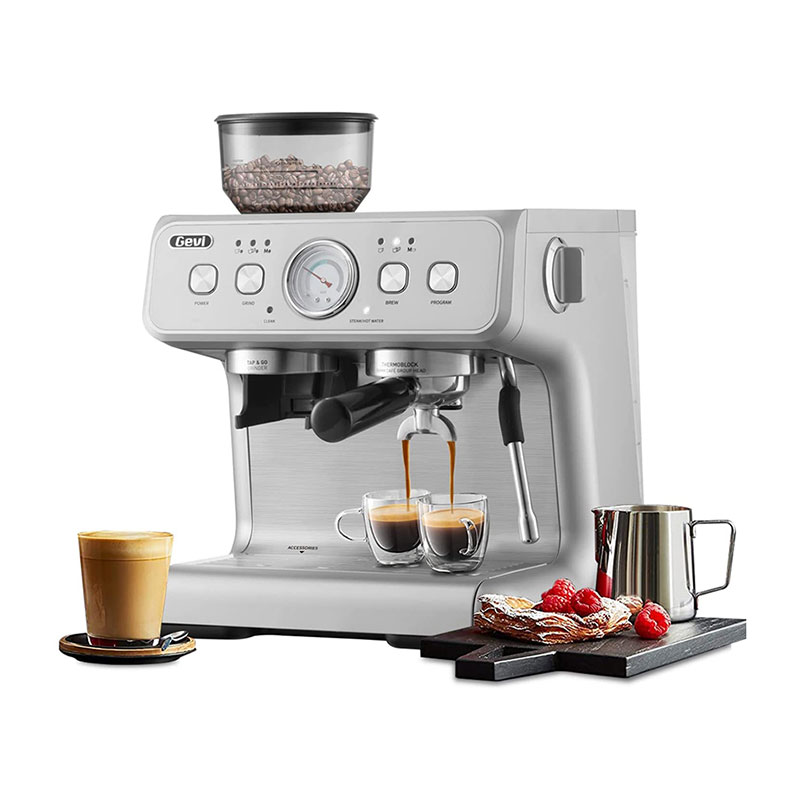Espresso Machines Unveiled: Exploring the Influence of Single Boiler, Double Boiler, and Heat Exchange Systems on Performance
2024-02-02
Introduction:
In the world of espresso, the importance of the coffee grinder cannot be overstated. It serves as the gateway to unlocking the nuanced flavors concealed within coffee beans. In this blog, we explore the different types of coffee grinders suitable for use with espresso machines and how their unique characteristics influence the taste of the final brew.
1. Burr Grinders: Precision in Every Particle:
Burr grinders are revered in the espresso world for their precision and consistency. These grinders feature two abrasive burrs, one stationary and one rotating, which crush the coffee beans into a uniform size. The result is a consistent grind size, crucial for extracting balanced flavors from the coffee grounds. Burr grinders come in both flat and conical designs, each offering a distinct grinding experience.
2. Blade Grinders: Simplicity with Caveats:
Blade grinders, while more budget-friendly, are less favored for espresso due to their lack of consistency. These grinders use spinning blades to chop the coffee beans, resulting in uneven particle sizes. While they may be suitable for other brewing methods, the inconsistency of grind size in espresso preparation can lead to uneven extraction, impacting the flavor profile.
3. Hand Grinders: Old-School Charm and Control:
Hand grinders have gained popularity among coffee enthusiasts for their simplicity and portability. Operating without electricity, these manual grinders allow users to control the grind size with precision. While hand grinders may require a bit more effort, their affordability and ability to produce consistent grind sizes make them a viable option for espresso lovers.
4. Flat Burr vs. Conical Burr Grinders: The Grind Experience:
Flat burr grinders and conical burr grinders each have their unique advantages. Flat burr grinders generally offer a more consistent grind size and are known for producing a sweeter and more balanced espresso. Conical burr grinders, on the other hand, may generate less heat during grinding, preserving the delicate flavors and aromas of the coffee.
5. Grind Size and Espresso Extraction: Unlocking Flavors:
The grind size directly influences the surface area of the coffee grounds exposed to hot water during extraction. For espresso, a fine and consistent grind is paramount. Too fine, and the extraction may become slow and bitter; too coarse, and it may be quick and sour. Finding the ideal grind size allows for optimal extraction, unlocking the full spectrum of flavors.
6. Adjustability: Tailoring to Taste Preferences:
The ability to adjust grind size is a valuable feature in any coffee grinder. This adjustability empowers users to fine-tune the grind according to the characteristics of different coffee beans and personal taste preferences. It's a key factor in achieving the perfect espresso shot.
7. Choosing the Right Grinder for Espresso: A Personal Journey:
Selecting the ideal coffee grinder for espresso is a personal journey that involves considering factors such as budget, convenience, and the desired level of control. For those who prioritize precision and consistency, investing in a high-quality burr grinder is often the preferred choice.
Conclusion:
In the realm of espresso, the coffee grinder stands as the artisanal tool that shapes the essence of every shot. Whether it's the precision of burr grinders, the simplicity of blade grinders, or the hands-on control of manual grinders, each type plays a role in the journey to unlocking the perfect flavor profile. Understanding the impact of different grinders on taste allows coffee enthusiasts to embark on a flavorful adventure, one espresso shot at a time.



